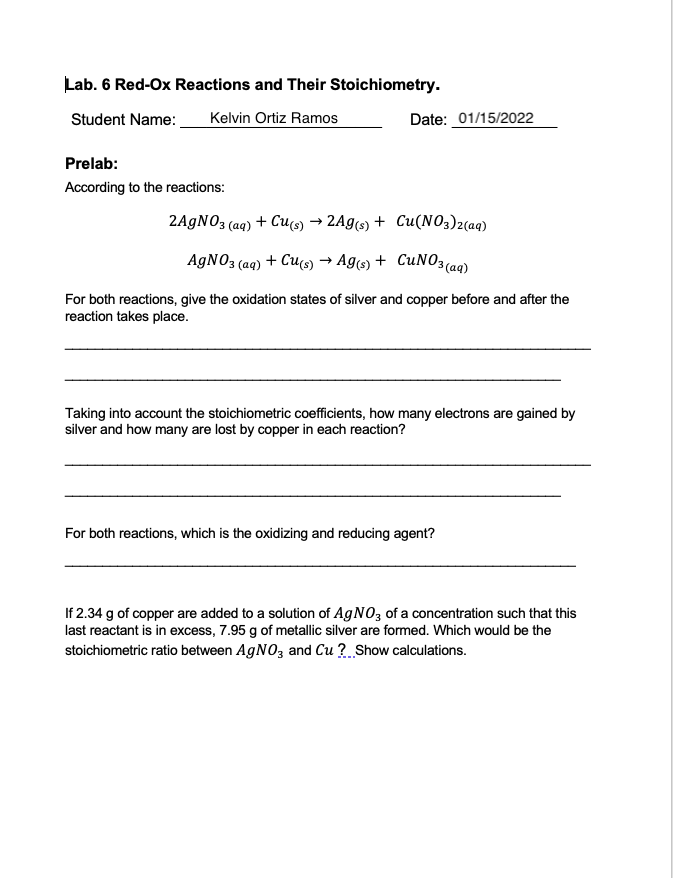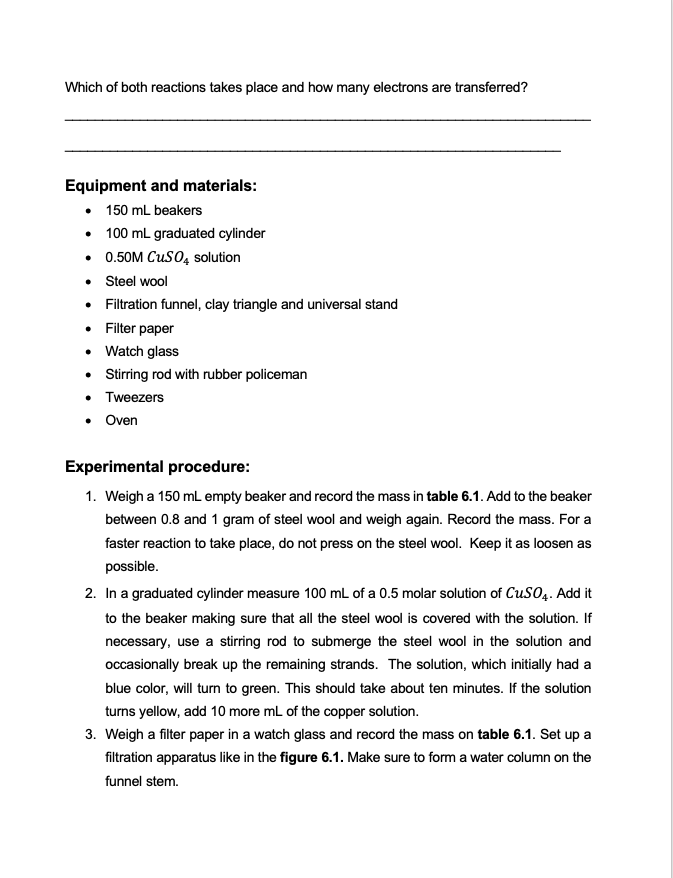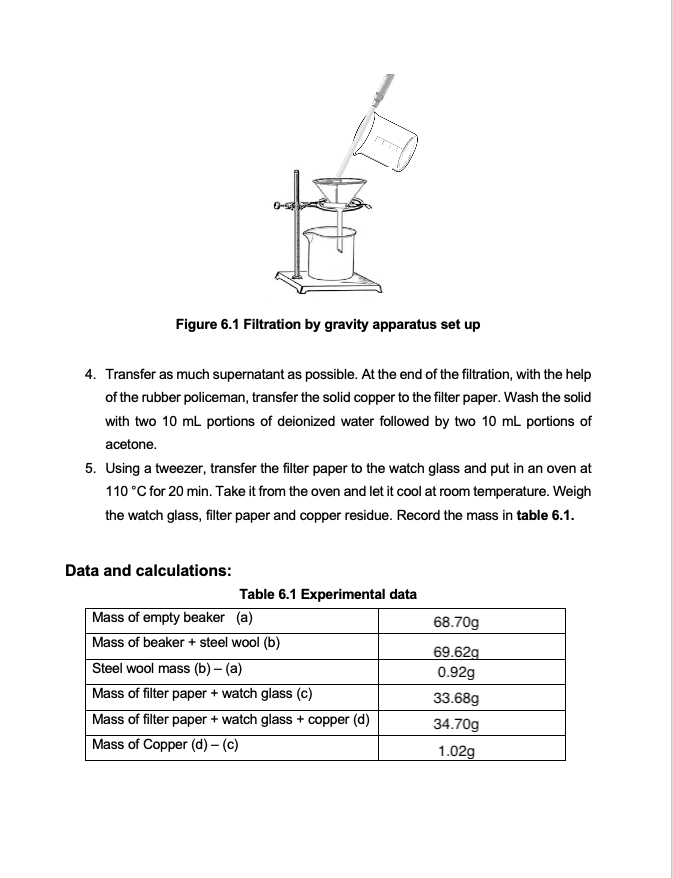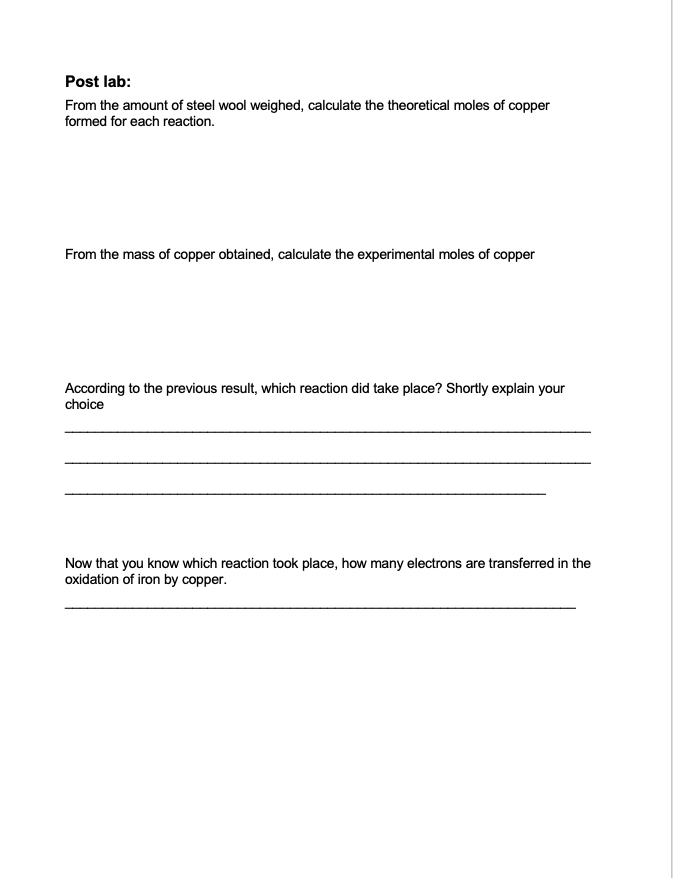Answered step by step
Verified Expert Solution
Question
1 Approved Answer
Hello, I would like to have help in all this Lab, I reached the conclusion but I didn't understand it. I'll be very grateful. Lab.



 Hello, I would like to have help in all this Lab, I reached the conclusion but I didn't understand it.
Hello, I would like to have help in all this Lab, I reached the conclusion but I didn't understand it.
I'll be very grateful.
Lab. 6 Red-Ox Reactions and Their Stoichiometry. Student Name: Kelvin Ortiz Ramos Date: 01/15/2022 Prelab: According to the reactions: 2AgNO3(aq) + Cu(s) + 2Ag(s) + Cu(NO3)2(aq) AgNO3 (aq) + Cu(g) Ag(s) + CuN03(aq) + For both reactions, give the oxidation states of silver and copper before and after the reaction takes place. Taking into account the stoichiometric coefficients, how many electrons are gained by silver and how many are lost by copper in each reaction? For both reactions, which is the oxidizing and reducing agent? If 2.34 g of copper are added to a solution of AgNO3 of a concentration such that this last reactant is in excess, 7.95 g of metallic silver are formed. Which would be the stoichiometric ratio between AgNO3 and Cu? Show calculations. Which of both reactions takes place and how many electrons are transferred? Equipment and materials: 150 ml beakers 100 ml graduated cylinder 0.50M CuSO4 solution Steel wool Filtration funnel, clay triangle and universal stand Filter paper Watch glass Stirring rod with rubber policeman Tweezers Oven Experimental procedure: 1. Weigh a 150 mL empty beaker and record the mass in table 6.1. Add to the beaker between 0.8 and 1 gram of steel wool and weigh again. Record the mass. For a faster reaction to take place, do not press on the steel wool. Keep it as loosen as possible. 2. In a graduated cylinder measure 100 mL of a 0.5 molar solution of CuSO4. Add it to the beaker making sure that all the steel wool is covered with the solution. If necessary, use a stirring rod to submerge the steel wool in the solution and occasionally break up the remaining strands. The solution, which initially had a blue color, will turn to green. This should take about ten minutes. If the solution turns yellow, add 10 more mL of the copper solution. 3. Weigh a filter paper in a watch glass and record the mass on table 6.1. Set up a filtration apparatus like in the figure 6.1. Make sure to form a water column on the funnel stem. R Figure 6.1 Filtration by gravity apparatus set up 4. Transfer as much supernatant as possible. At the end of the filtration, with the help of the rubber policeman, transfer the solid copper to the filter paper. Wash the solid with two 10 mL portions of deionized water followed by two 10 mL portions of acetone. 5. Using a tweezer, transfer the filter paper to the watch glass and put in an oven at 110 C for 20 min. Take it from the oven and let it cool at room temperature. Weigh the watch glass, filter paper and copper residue. Record the mass in table 6.1. 68.70g Data and calculations: Table 6.1 Experimental data Mass of empty beaker (a) Mass of beaker + steel wool (b) Steel wool mass (b)-(a) Mass of filter paper + watch glass (c) Mass of filter paper + watch glass + copper (d) Mass of Copper (d)-(c) 69.629 0.929 33.686 34.70g 1.02g Post lab: From the amount of steel wool weighed, calculate the theoretical moles of copper formed for each reaction. From the mass of copper obtained, calculate the experimental moles of copper According to the previous result, which reaction did take place? Shortly explain your choice Now that you know which reaction took place, how many electrons are transferred in the oxidation of iron by copperStep by Step Solution
There are 3 Steps involved in it
Step: 1

Get Instant Access to Expert-Tailored Solutions
See step-by-step solutions with expert insights and AI powered tools for academic success
Step: 2

Step: 3

Ace Your Homework with AI
Get the answers you need in no time with our AI-driven, step-by-step assistance
Get Started


